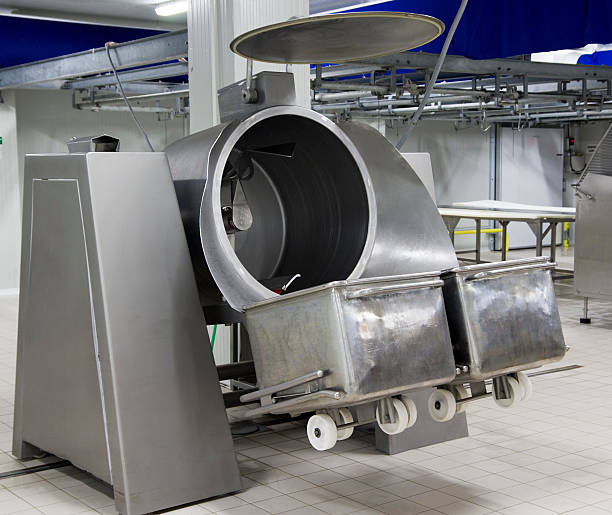Introduction – Current State of Play: The Chocolate Sector in Philippines
Let’s set the stage. The chocolate industry in the Philippines is heating up—literally and metaphorically. With rising temperatures shaking up global cocoa supply chains and major economic shifts rippling through the region, local players are stepping up. From bean-to-bar artisans to mass-market producers, chocolate makers are navigating a whirlwind of changes.
So, what’s happening right now?
For starters, the Philippines’ chocolate market is growing fast. Consumer tastes are changing—people want premium, healthier, and more locally sourced products. At the same time, global cocoa prices are all over the place, thanks to supply disruptions in West Africa and climate volatility. Add in new government initiatives and international investments, and you’ve got a market that’s evolving by the minute.
In this kind of environment, businesses that don’t stay sharp risk falling behind. Whether you’re sourcing raw cacao or finished products, understanding the current landscape is essential.
Let’s break it all down.
Deep Dive – Market Movers: Recent Developments and Consequences
Rapid Market Growth and Shifting Consumer Preferences
In 2024, the Philippine chocolate market was valued at around USD 751.5 million. By 2033, it’s projected to hit USD 1.2 billion. That’s a solid 4.78% CAGR over the next decade. What’s driving this? The rise of premium and artisanal chocolates. Consumers are ditching mass-produced candy bars for craft chocolates with higher cocoa content and distinct flavors.
The bean-to-bar movement is also gaining ground. Local brands are emphasizing transparency and sourcing cacao from Philippine farmers. People want to know where their chocolate comes from—and they’re willing to pay for quality.
Supply Chain Shifts and Government Support
Global cocoa supply chains have been shaky. Issues like climate change and labor shortages have disrupted production in West Africa, the world’s biggest cocoa supplier. That’s pushed prices up and availability down.
In response, the Philippine government is doubling down on domestic cacao production. Through the Cacao Industry Development Roadmap, the Department of Agriculture is investing in farmer training, better seedlings, and post-harvest infrastructure. The goal? Reduce reliance on imports and make the Philippines a cacao powerhouse.
Big Investments and Market Expansion
Major players are making moves. In August 2024, Mars Incorporated acquired Kellanova (maker of Pringles and Cheez-Its) for USD 36 billion. The move expands Mars’s reach in the snack and confectionery space—potentially boosting chocolate innovation and distribution in the Philippines.
So, what’s the takeaway? Whether you’re sourcing or selling, you need to understand where this market is headed—and who’s leading the way.
Top 8 Verified Chocolate Suppliers in Philippines – Navigating Current Market Realities
Based on buyer reviews, export capabilities, and Freshdi’s verified data, here are the top chocolate suppliers in the Philippines for Q3 2025:
-
RZJ Trading
A consistent B2B performer, known for its reliable supply of chocolate products and cacao derivatives. RZJ Trading is highly rated for its adherence to international standards and responsive customer support. -
RIVERDALE CONFECTIONERY, INC.DUSTRY, INC.
This supplier stands out for its wide range of confectionery products and solid export record. They cater to both local and international markets, with a strong emphasis on product innovation. -
Privtae
Privtae is known for its premium chocolate products and sustainability practices. Their bean-to-bar process highlights local cacao and supports community farming initiatives. -
Leaven Nuts Trading
Specializing in cacao trading and chocolate ingredient supply, Leaven Nuts Trading is a reliable partner for bulk buyers looking for quality and competitive pricing. -
Makee
Makee is quickly gaining popularity for its health-centric chocolates, offering sugar-free and vegan options that cater to a growing segment of health-conscious consumers. -
Doncris Cacao
Focused on the raw cacao segment, Doncris Cacao is a go-to for businesses sourcing fermented cacao beans. They work closely with local farmers to ensure quality and consistency. -
Bbcc Cacao Seeds
This supplier specializes in cacao seeds and seedlings, playing a critical role in the upstream part of the supply chain. They’re essential for companies investing in local cacao farming. -
FNT International Trading Corp.
A well-established exporter with a broad product portfolio, FNT delivers bulk chocolate and cacao ingredients to buyers across Asia and the Middle East.
Dynamic Ranking Note: Supplier rankings on platforms like Freshdi can shift based on recent orders, buyer feedback, and market activity. Always check Freshdi’s “Suppliers of the Month” to stay updated with real-time performance metrics.
Market Navigation – Strategic Responses to The Current Chocolate Landscape in Philippines
Opportunities for B2B Buyers
The chocolate market in the Philippines is full of promise—if you know where to look.
-
Premium is the New Norm
Filipinos are moving away from generic chocolates and looking for something special. Healthier options, like sugar-free and organic bars, are gaining traction. Products with local flair—think ube-infused truffles or calamansi-flavored dark chocolate—are hot sellers. -
Support for Local Farming is a Win-Win
Companies like Auro Chocolate are setting the tone by purchasing ₱23 million worth of cacao directly from farmers. This not only boosts local economies but also ensures fresher, more traceable products. -
Sustainability Sells
With climate change affecting global cacao production, businesses that invest in sustainable sourcing and climate resilience will likely have an edge.
Challenges to Watch Out For
-
Cocoa Price Volatility
Prices are climbing due to global shortages. This means higher production costs, which can squeeze margins if not managed carefully. -
Inconsistent Quality Control
Some local cacao producers struggle with fermentation quality, which can affect flavor and texture. Building strong relationships with suppliers who prioritize training and consistency is key. -
Supply Chain Disruptions
From port delays to shipping costs, the global logistics landscape is still unstable. It’s essential to diversify your supply sources to avoid bottlenecks.
Strategic Adjustments for Buyers
- Focus on Long-Term Supplier Relationships: Work with partners who are investing in farming communities and quality control.
- Diversify Sourcing Regions: Don’t rely solely on one province or exporter—spread your risk.
- Monitor Local Economic Trends: Q3 2025 saw a slowdown in Philippine GDP due to a corruption scandal. Expect possible shifts in consumer buying behavior and adjust your product pricing and marketing accordingly.
- Leverage Platforms Like Freshdi: Use tools to track RFQ trends and verify supplier certifications quickly.
Conclusion – Key Takeaways for Businesses in a Dynamic Market
The Philippine chocolate industry is at a crossroads. On one side, we have soaring demand for premium, health-conscious, sustainably sourced products. On the other, we face economic headwinds, global supply chain woes, and a volatile pricing environment.
For buyers, the key to success lies in agility. Stay ahead by building relationships with top-tier suppliers, investing in local sourcing, and using platforms like Freshdi for real-time market insights, verified connections, and trend tracking.
Your Checklist for Sourcing Chocolate in Q3 2025
- ✅ Verify supplier credentials and track record on Freshdi
- ✅ Prioritize suppliers investing in local cacao and sustainable practices
- ✅ Monitor economic and climate impacts on supply and demand
- ✅ Diversify sourcing to mitigate risk from global disruptions
- ✅ Keep an eye on trending product categories and consumer preferences
With the right strategy and partners, this evolving market is full of sweet opportunities.
FAQs
1. Why are cocoa prices rising globally?
Global cocoa prices are rising due to production issues in West Africa, primarily driven by climate change, disease outbreaks in crops, and labor shortages.
2. What makes Philippine chocolate unique?
Philippine chocolate often uses native cacao varieties and incorporates local flavors like calamansi, pili nuts, and ube, offering a distinct taste profile.
3. How can I verify a chocolate supplier in the Philippines?
Use platforms like Freshdi, which provide verified supplier profiles, buyer reviews, and RFQ trends.
4. Are there health-conscious chocolate options in the Philippines?
Yes! Many local brands now offer sugar-free, vegan, and organic chocolates to meet the growing demand from health-conscious consumers.
5. How is the government supporting chocolate producers in the Philippines?
Through initiatives like the Cacao Industry Development Roadmap, the government is investing in farmer training, infrastructure, and improved cacao seedling access to boost domestic production.
References
- IMARC Group – Philippines Chocolate Market Report
- OpenPR – Chocolate Market Projection
- MarkNtel Advisors – Philippines Chocolate Market Trends
- Business Mirror – Cocoa Price Surge
- Philstar – Auro Chocolate Local Sourcing
- Reuters – Philippine Q3 2025 Economic Slowdown
- PNA – Climate Change and Cocoa
- SunStar – Filipino Chocolatier Goes Global





